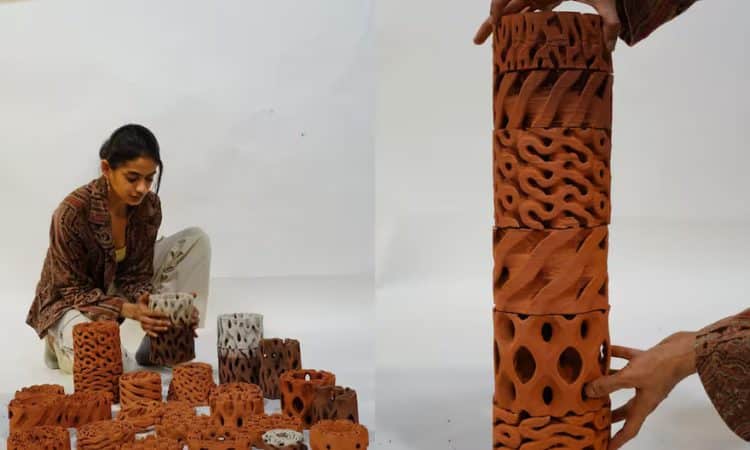
One of the best allies to combat high summer temperatures is air conditioning. It is the appliance that most users choose to cool off, knowing that at the end of the month they will see the consumption of these reflected in their electricity bill. From now on, an innovative 3D printed product that works to cool the rooms without the use of electricity has been added.
Rameshwari Jonnalagedda, a graduate in architecture received from the University College London (UCL, for its acronym in English), created an ecological air conditioner based on clay, which does not consume electricity. These are shaped like a termite mound and are manufactured using a 3D printer. The name of this innovative invention is TerraMound.
Jonnalagedda wanted to come up with a new design for air conditioners to help cut down on energy use. He first planned to use it as a thesis for a master’s degree in design, but the idea was so good and had such an impact that it was analyzed as a possible way to build houses in the future.
Natural cooling mechanisms
The air conditioners used in homes or offices work by means of an evaporative cooling process that lowers the temperature of the environment. In the case of the TerraMound, its creator investigated the natural cooling mechanisms that exist in termite mounds, so it adopted the same shape, because thanks to the porous structure they have the ability to effectively cool all its internal compartments.
“My main goal was to experiment with porous cells with minimal surface geometries and explore the potential of high surface geometries,” said Jonnalagedda in a post on his LinkedIn account. Where he further recounted, “these minimal surfaces drive innovation in various fields, such as aerospace, medicine or materials science.”
This creation is composed of terracotta clay, which present different types of surface geometries, allowing it to mimic some structures in nature. The main problem in materializing this device was the complexity of replicating the shapes of the termite mounds, but thanks to the power of the Delta WASP 3D printer, it was possible to manufacture the pieces, which then had to be fired in a kiln to assemble them.
The graduate explained on the project’s website that her invention works like a desktop fan and that its operation is very simple. A little water must be applied to the top of the device and it filters through the slits. That is when the device begins to absorb the humidity to facilitate the cooling of the environment through evaporation.
The real potential of this invention lies in the possibility of being able to expand the concept used to replicate it on a large scale, such as in the construction of houses or buildings. This system can be applied to the facades of houses, since its design allows the ventilation control to be efficient.
The prototype of this device is not 100% autonomous, as it has a small battery-operated electric fan at its base, which creates the cooling effect. In addition, thanks to its size it can also be used as a decorative element for the home, and being a printed object there is the possibility that the device can be ordered with a custom design.

